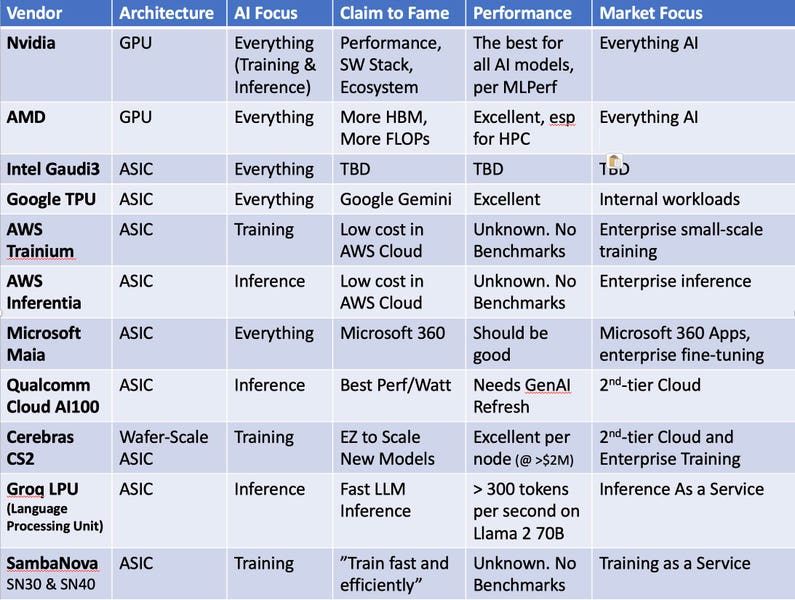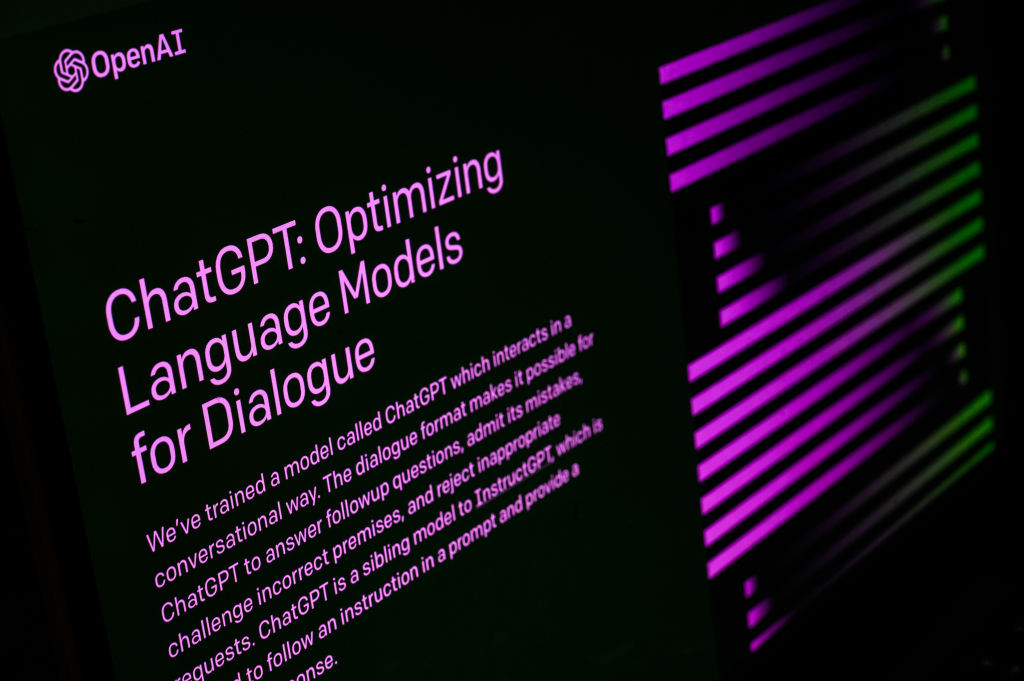Exploring the Impact of Competitors on the Nvidia AI Dominance
The narrative surrounding Nvidia’s AI advancements has undeniably captured the attention of investors. However, amidst this spotlight, rival companies like AMD, Intel, Cerebras, Tenstorrent, Groq, and D-Matrix, along with various Cloud Service Providers, are gearing up to introduce alternatives that could potentially reshape the market landscape. Let’s delve into how these players might influence the AI market.
Overview of Competitive Dynamics
In the realm of AI accelerators, Nvidia has long been the undisputed leader across multiple facets such as market share, hardware capabilities, software offerings, and ecosystem support. Nonetheless, with the AI sector projected to witness exponential growth—from \(67 billion in revenue by 2024 to an estimated \)119 billion by 2027 according to Gartner—competitors are strategically pivoting towards generative AI to carve out their share of the lucrative market. While the upcoming AMD MI300 appears promising, it is not the sole contender eyeing a piece of Nvidia’s AI domain. Let’s examine the competitive landscape and assess the potential winners and losers in this evolving scenario.
Insights into Key Players
NVIDIA
Nvidia, the frontrunner in AI technology, has expanded its chip roadmap significantly, possibly a result of leveraging AI in chip design. Keep an eye out for the upcoming GTC event for further developments in this space.
AMD
Despite initial skepticism surrounding AMD’s claims, subsequent benchmark reassessments have bolstered their position. The introduction of the MI300 with enhanced HBM3e capabilities positions AMD favorably in the inference market for cloud and enterprise applications. With robust software and model offerings gaining recognition, AMD is poised to secure the second position in the market with substantial growth potential in the coming years.
SambaNova and Groq
These players have shifted their focus towards specialized services, particularly in training and inference domains. Groq’s remarkable inference performance and SambaNova’s innovative chip offerings indicate their commitment to challenging industry giants like Nvidia, AMD, and Intel. However, tangible benchmarks and customer validations are crucial for establishing their competitive edge.
Cerebras
Under Andrew Feldman’s leadership, Cerebras continues to make significant strides in the AI landscape, securing notable partnerships and enhancing its product portfolio. The upcoming WSE-3 launch is eagerly anticipated, further solidifying Cerebras’ position as a key player in the market.
Intel
Intel’s AI endeavors are poised for a significant leap with the impending Gaudi3 launch, promising substantial performance enhancements. However, timely announcements are imperative for Intel to secure a prominent position in the market, especially against formidable competitors like Cerebras.
Qualcomm
Qualcomm’s Cloud AI100 inference engine, particularly the Ultra platform, has garnered attention for its performance gains in generative AI. The platform’s adoption by leading tech players underscores Qualcomm’s relevance in the evolving AI landscape.
Cloud Service Providers (CSPs)
Noteworthy advancements in AI chip design are also emerging from CSPs like Google, Microsoft, and Amazon AWS. These in-house accelerators, such as Google’s TPU V5p and Microsoft’s Maia, signify a paradigm shift in AI hardware development, posing a substantial challenge to traditional chip manufacturers.
Closing Remarks
The AI market is witnessing a rapid evolution with diverse stakeholders vying for a share of the burgeoning AI industry. While the competitive landscape is dynamic and challenging to navigate, the quest for AI supremacy continues to drive innovation and technological advancements across the board.
For more detailed insights and updates on this evolving landscape, stay tuned for upcoming announcements and benchmarks that will shed light on the competitive positioning of key players in the AI domain.










